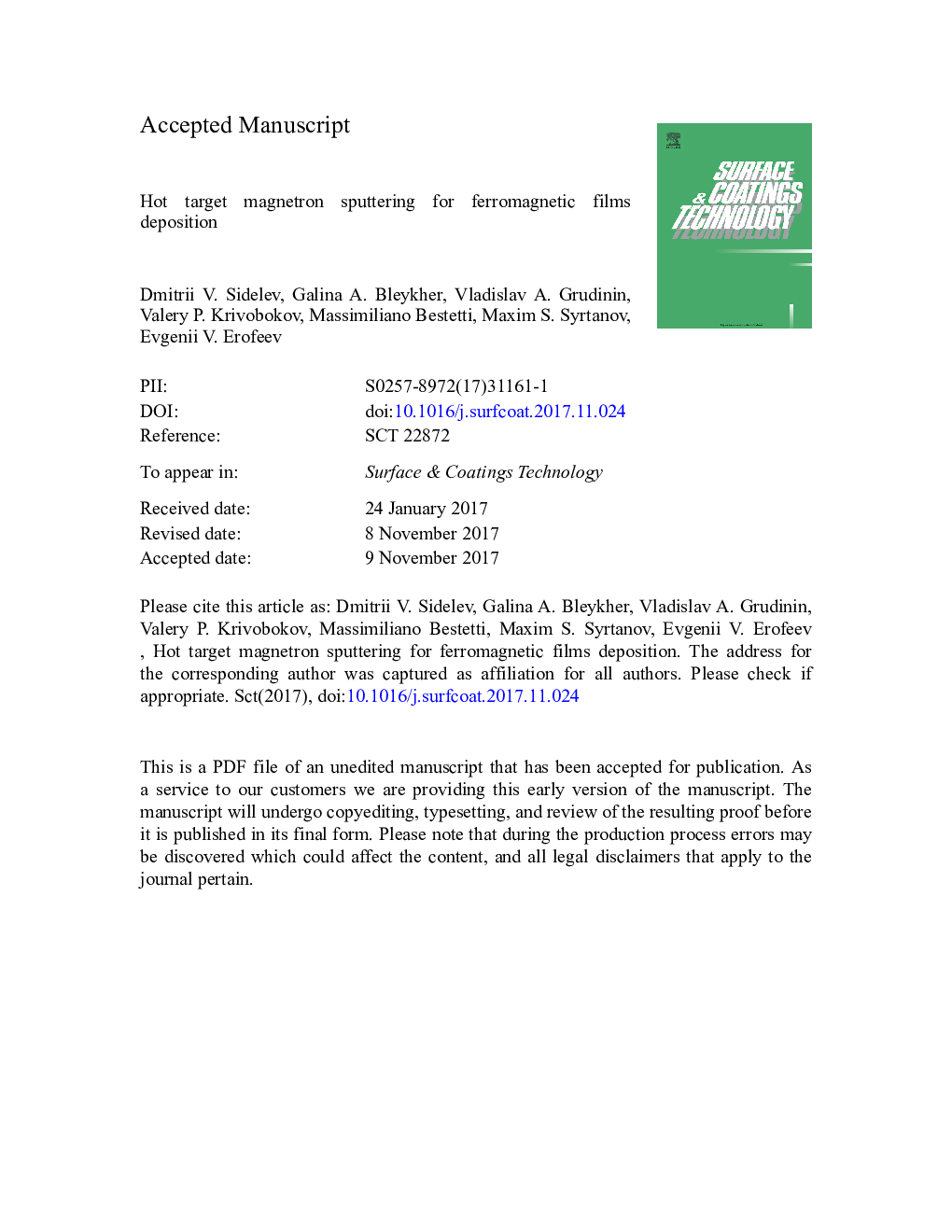| Article ID | Journal | Published Year | Pages | File Type |
|---|---|---|---|---|
| 8024478 | Surface and Coatings Technology | 2018 | 44 Pages |
Abstract
This work is an investigation on the operation parameters for Ni films deposition by magnetron sputtering from target working at temperatures higher than the Curie temperature due to magnetic phase transition of the sputtered target, which is partial heat-insulated from the water-cooled magnetron body. The ferro- to paramagnetic transition of the target results in decrease of discharge voltage and rise of discharge current. Thereby, discharge power increases under voltage control mode or hot Ni target sputtering can occur at lower pressures under power control mode. Heating of the Ni target and its ferro- to paramagnetic transition leads to stabilization of the discharge parameters. The changes of the discharge current and power decreased from 10.5% to 2.5% during a single sputtering process under voltage control mode. Moreover, a slight increase of the deposition rates of 20â¦25% was determined, when hot target sputtering was performed. The XRD assessment showed that Ni films deposited by hot target sputtering have a textured crystal structure with larger grain sizes and lower residual stresses in comparison with cooled Ni target sputtering. When passing from cooled to hot target sputtering, the type of film growth changes from zone 1 to zone T, and surface roughness of Ni films decreased.
Related Topics
Physical Sciences and Engineering
Materials Science
Nanotechnology
Authors
Dmitrii V. Sidelev, Galina A. Bleykher, Vladislav A. Grudinin, Valery P. Krivobokov, Massimiliano Bestetti, Maxim S. Syrtanov, Evgenii V. Erofeev,
